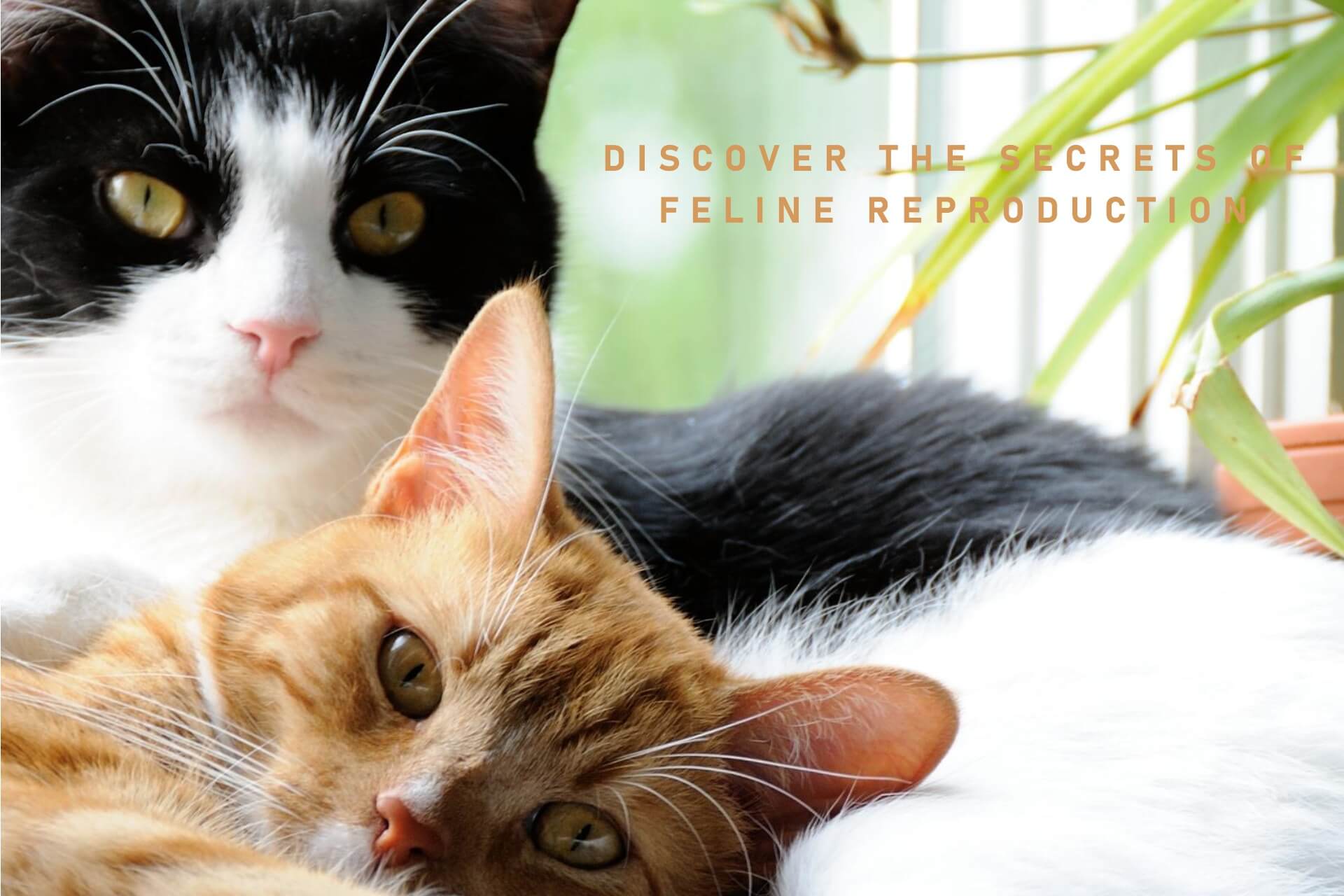😺 Understanding Feline Reproduction: How Do Cats Mate? 😺
Welcome to my vet blog! As an experienced feline veterinarian, I'm often asked by cat owners to explain how cats reproduce and mate. It's important for pet parents to understand their cat's reproductive cycles and behaviors. In this comprehensive guide, I'll walk you through everything you need to know about feline reproduction, from going into heat to mating behaviors to pregnancy and birthing. Let's dive in!
Going Into Heat: The Feline Estrous Cycle
Cats reach sexual maturity around 6-10 months old. Unlike humans who have a menstrual cycle, cats have an estrous cycle - aka going into heat. 😻 This is when they are fertile and ready to mate.
The feline estrous cycle lasts 2-3 weeks on average and occurs seasonally, typically in the spring and summer months. However, some cats will go into heat year-round. Here are the stages of a cat's heat cycle:
Proestrus
This initial stage lasts 1-2 days. The cat's reproductive tract starts preparing for pregnancy. You may notice behavioral changes like your cat being more affectionate and vocal.
Estrus
This is the breeding stage that lasts 5-10 days. The cat ovulates and is fertile during this time. You'll notice significant behavioral changes like loud yowling, restless activity, decreased appetite, and attempts to escape outdoors to find a mate.
Interestrus
This brief 1-2 day stage is the transition between the end of estrus and the start of the next proestrus phase. The cat is no longer fertile. Behavior returns to normal.
Anestrus
This is a period of reproductive inactivity between heat cycles lasting 1-3 weeks. Hormone levels are low and the cat has no interest in mating.
As you can see, a cat in heat exhibits obvious behavioral and physical signs. Track your cat's cycles on a calendar to anticipate when she may go into heat next. Most cats go into heat every 2-3 weeks during breeding season. Spaying your cat will stop this cycle permanently.
Feline Mating Behaviors and Rituals
When female cats go into estrus, they are driven to find a mate and will demonstrate some fascinating mating behaviors. Here's what to expect:
Rubbing and Rolling
Cats have scent glands around their face, tail and hindquarters. Your female will rub against furniture, walls, and people's legs to spread her scent and signal her reproductive status. She'll also roll around on the floor.
Vocalizing
Expect very loud, frequent yowling and meowing, especially at night. This vocalization alerts potential mates of her presence and readiness to breed.
Affection and Purring
Your normally aloof cat may suddenly become very affectionate, rubbing against you and purring loudly. This tactile behavior deposits her scent on you to signal she's in heat.
Hind Leg Treading
She may tread her hind legs against the floor while raising and moving her tail. This mimics the motion of mating and attracts potential partners.
Mounting Objects or People
She may attempt to mount objects, furniture, or even your leg! This shows her urge to mate. Make sure to redirect this behavior gently.
Escaping
To find male cats, she'll try bolting out doors and windows. Carefully monitor exits to ensure she can't escape and get pregnant.
Decreased Appetite
Due to her single-minded urge to mate, she may eat less. Try tempting her with tasty treats.
Excessive Grooming
She'll spend more time grooming her genitals to prepare for mating. This overgrooming can cause hair loss and irritation. Separate male cats and distract her with playtime.
Attracting Males
Intact male cats will howl, fight, and roam widely in response to a female in heat. Keep your windows closed so neighborhood tomcats aren't attracted.
These behaviors all serve the purpose of advertising to males that your female is fertile and ready to breed. As a responsible pet owner, make sure your cat is indoors and away from intact males during this time.
The Mating Process from Start to Finish
If an intact male and female cat are allowed to mate, here is how the process unfolds:
1. Courtship
The male suitor will approach the female when he detects her heat pheromones. He rubs, sniffs, and licks the female to determine if she is ready. The female will allow this inspection and rub against the male.
2. Mounting
When she's receptive, the female cat assumes the mating position - with front elbows and chest lowered to the ground while hindquarters are raised. The male will mount her from behind, tread his back legs against her flanks, then intromit and ejaculate.
3. Copulation
The actual copulation only lasts 3-5 seconds! Cats are induced ovulators, meaning the female cat ovulates after successful mating. This triggers the release of eggs down the oviducts.
4. Completion
The mating pair will separate. The female often screams loudly and becomes aggressive towards the male once the mating session is complete. She may also groom her vulva region.
5. Additional Mating
The couple will usually mate multiple times within the 3-10 day estrus period to increase chances of fertilization. The male cat's barbed penis stimulates ovulation in the female.
6. Pregnancy
If the female cat mates successfully while in estrus, she will usually become pregnant with a litter of kittens. Cat pregnancy lasts an average of 63-65 days.
I hope this overview gives you a better idea of how intimate acts occur between felines. While fascinating, I always recommend spaying females before their first heat cycle and neutering males by 6 months to prevent unwanted litters.
Signs Your Cat May Be Pregnant
If you suspect your unspayed female cat mated while in heat, watch for these signs of pregnancy in the coming weeks:
Pink or swollen nipples - occurs 1-2 weeks after mating
Weight gain and enlarged, distended abdomen
Increased appetite and less interest in mating
Behavior changes like seeking seclusion and becoming less active
Enlarged mammary glands within the last third of pregnancy
Nesting behaviors like shredding fabric and blankets for a nursery
Schedule a vet exam to confirm the pregnancy and estimate how far along she is. X-rays and ultrasounds can check for kittens near the end of term. Let your vet know immediately so you can prepare for the pending cat birth.
Caring for a Pregnant Cat
If your cat is expecting kittens, here are some tips for proper prenatal care:
Feed a high-quality kitten diet for added protein and calories
Ensure she is strictly indoors and comfortable in a quiet area
Have a nesting box lined with soft bedding available by week 8
Limit stress and changes to her routine to avoid early labor
Gently brush and groom her belly and mammary glands
Take her to the vet for an exam, nutrition plan, and to estimate delivery date
With the right care, your pregnant queen can have a smooth gestation and birth. Be ready for the big day! Kittens are born after 63-65 days of pregnancy.
Preparing for the Kitten Birth
As your cat's due date approaches, prepare for the pending kitten delivery:
Have a secluded, warm nesting area available
Gather supplies like towels, cotton swabs, dental floss, and heating pad
Keep emergency vet contacts on hand in case she has birthing trouble
Look for signs of labor starting like restlessness and nesting instincts
Once labor begins, check on her but allow privacy during delivery
Be ready to clear mucus/membranes from kitten's mouth and nose
Tie off umbilical cords and weigh/sex kittens after birth
Make sure all placentas are delivered and watch for post-birth bleeding
With preparation, attentive monitoring, and veterinary assistance if needed, your new cat mom can have a smooth kitten birthing process. Enjoy the new litter!
When Should Cats Be Spayed or Neutered?
While cat mating behaviors are interesting, most vets recommend spaying females before 6 months and neutering males before sexual maturity to prevent unwanted litters. Here are the ideal age guidelines:
😺 Spaying: 5-6 months, prior to first heat cycle
😺 Neutering: 5-6 months old
There are many benefits to spay/neuter including:
Prevents pregnancy and heat cycles
Controls roaming and territorial behaviors
Reduces risk of reproductive cancers later in life
Can resolve some behavior issues like spraying and aggression
Discuss the ideal timing with your veterinarian. Early spay/neuter ensures your cats don't contribute to cat overpopulation. There are already so many kitties needing homes!
I hope this comprehensive guide gave you insight into the fascinating process of feline reproduction and mating rituals. As a cat owner, the best thing you can do is get your pet spayed or neutered at the right age. This allows your cat to live a happy and healthy life without the stresses of heat cycles, pregnancy, and mating behaviors. Let me know if you have any other cat care questions!
Relevant Links:
😻 Should You Spay or Neuter Your Cat?
😻 Signs Your Cat is Ready to Give Birth
😻 How to Care for Newborn Kittens
Let me know if you have any other feline reproduction questions! This is Dr. Mitun Sarkar at bdvets.com signing off for now.


















